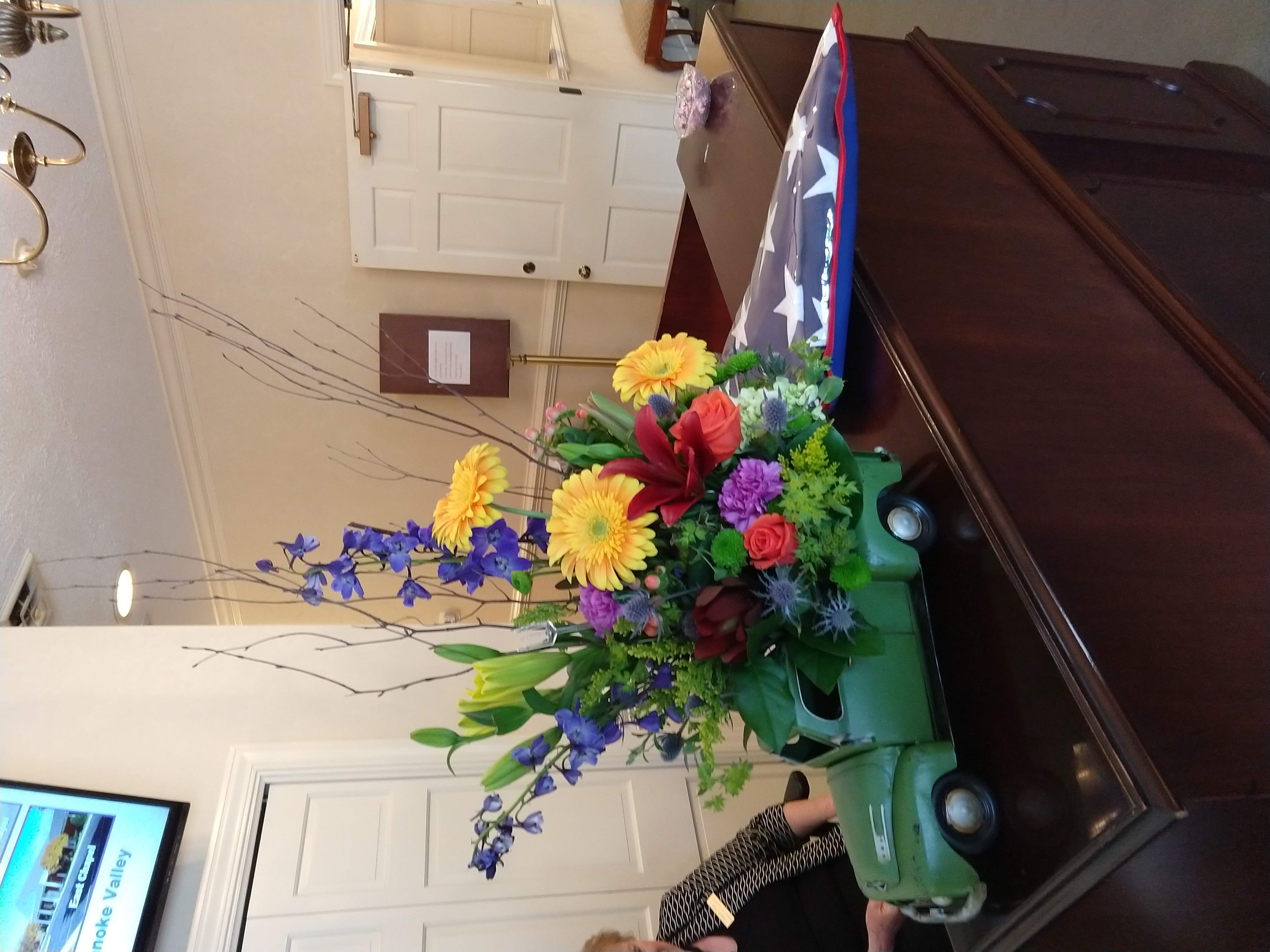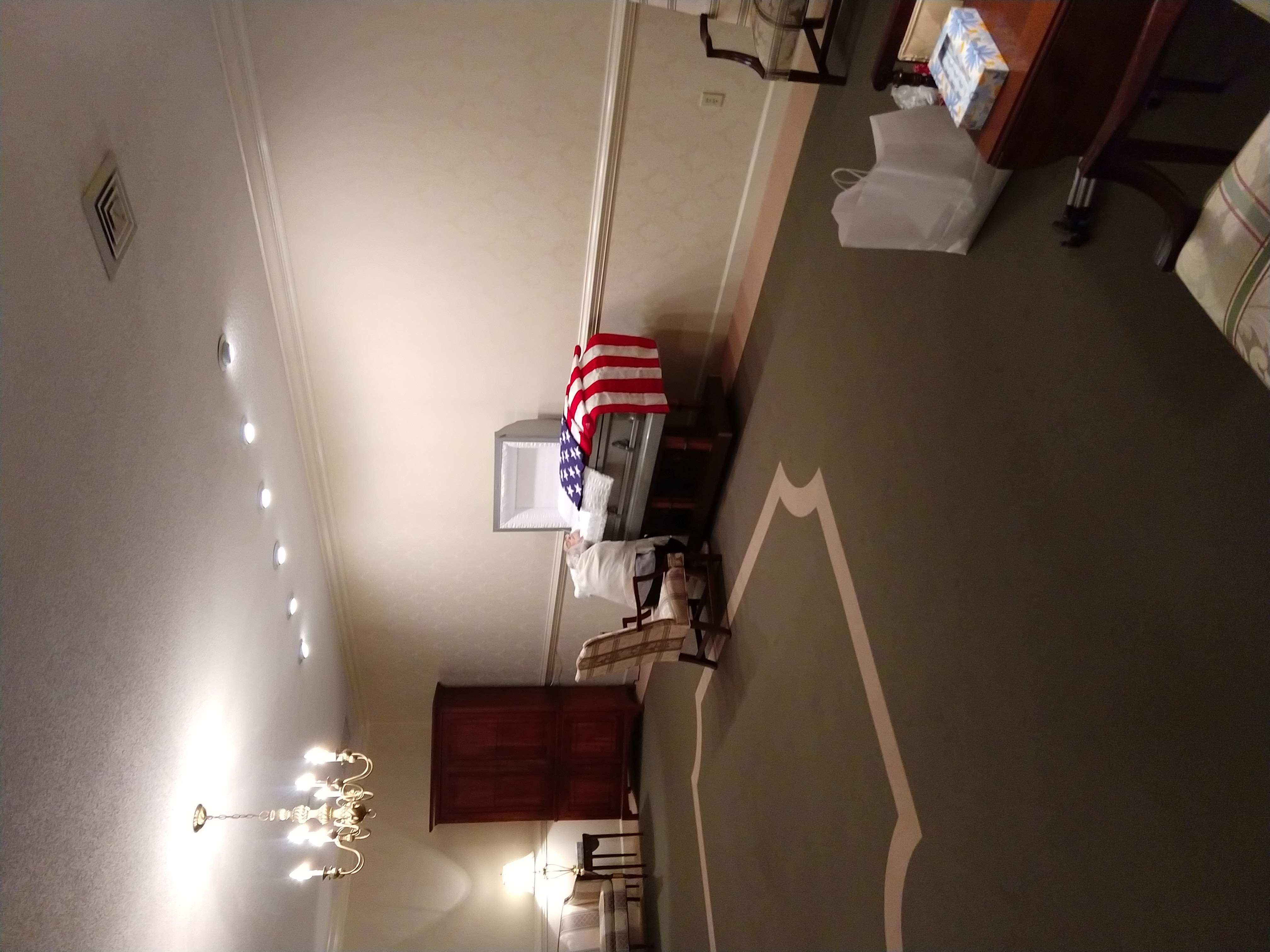AARP Hearing Center

Maggie always expected to go first. But she didn’t. Her husband of 22 years passed away the day before Easter, in the living room of their home, on a hospice-provided hospital bed, shortly after sharing a beautiful sunrise with her. Maggie was profiled in a Caregiver’s Story (March 6, 2020, Lisa Hoyt) describing her struggles and joys of being a caregiver for Dean for the 15 months prior to his death. She asked for a “follow-up,” in part to gain some closure for herself, but also to serve as a helpful outline for those dealing with the death of a loved one in the COVID-19 era.
Dean and Maggie started making end of life arrangements and having earnest conversations early in 2020 while Dean was struggling with health issues, but before the COVID-19 pandemic became a reality in the U.S.He always meant to make a will, but never got around to it.“I will,” he said, “soon.” Soon was almost never. He was passionate about being buried in his family’s plot back in Iowa, next to his parents, and eventually, Maggie. They had plots there, headstones already installed with their names engraved. They just needed to die and get there. The dying would prove to be the easier task.
A friend agreed to help them tackle the complicated task (pre-COVID-19) of making funeral arrangements of which Dean approved. He planned his funeral service, and hoping to save a few pennies, asked his son if he might rent a van to transport his body from Virginia to Iowa, when the time came. (Head’s up on that, it was much cheaper for Dean to take his final flight on Delta).
The arrangements involved converting two insurance policies to pre-pay two funeral homes for their portions of his final wishes. The Virginia funeral home would pick up his body, embalm and prepare for viewing, transport to his church for the services and then bring him to Charlotte, N.C. for a flight to Des Moines, Iowa. The Iowa funeral home would meet him in Des Moines and transport to Manchester, Iowa for burial, with his family present. Enter COVID-19.
Dean was discharged from the Veteran Care Center to home, with an enthusiastic live-in (but retired after a 50-year career) nurse.He did well for a few days, but over a weekend he became worse. An ambulance trip later back to the VA hospital, he was admitted with pneumonia, at 1 pm the next day Maggie was told that his condition was serious. At 5 pm the same day, the VA called her back and said they were discharging him, she could come and get him. “But I don’t drive,” she explained. “That’s OK, we’ll bring him home.”
Happy to have him back, but leery of his condition and sudden discharge, she found that the VA had been shut down to visitors. Had he not been discharged that day, he likely would have died in a hospital room surrounded by medical personnel, without his beloved Maggie by his side. She promised friends that she would finally call hospice to help with his care. She did and they came.
Instantly their living room became command central. A nurse, social worker, chaplain, and aides were there to help her, wearing masks and gloves.The new norm had taken hold.Social distancing had no wiggle room for dying people.Dean couldn’t have visitors, which meant Maggie couldn’t either. She found support from friends and family by telephone, and Dean was able to Facetime his sons. She wouldn’t leave her house again until the day of his funeral.
Had he signed his will? No. Could he? Or was it too late? Assembling witnesses and a Notary would be difficult. Maggie couldn’t witness because she was a beneficiary. No family or friends had been in the home since Dean’s discharge because of the possibility that he could have been exposed to COVID-19 while hospitalized. The hospice social worker and a friend agreed to be witnesses, in masks, standing at a distance from Dean. A willing notary, also masked and wearing gloves, approached Dean in his hospital bed and asked him if he still wanted to sign the will that Maggie and he had discussed the night before. He nodded his head. He was unable to grasp the pen to sign. The notary apologized for disturbing him and said that it was his choice, and if he wanted to sign it he would have to be able to hold the pen. Again, he nodded his head. After a few sips of water, and a pillow under his elbow, Dean was determined to sign his name in both required places. That was his last physical act.
Maggie sat up with him through the night, once nodding off upright on the loveseat next to him. She startled awake and realized it was almost sunrise. Then Dean woke too. She sat with him enjoying the sun rise, telling him how much she loved him. His breathing slowed. Then stopped.
That part of his story is probably similar to many hospice death scenarios. What happened next was not. Although hospice made the call to the funeral home who dispatched workers to pick up Dean’s body, the funeral and burial he had planned did not happen, thanks to COVID.
The funeral home allowed three men from Dean’s church family to dress his body in traditional burial clothing. That was the last time they would see him. There would be no viewing, no funeral at his church, no burial with his family. Instead, his beloved wife was accompanied to the funeral home by a friend. In a large room that would probably have had hundreds of visitors, his flag draped casket sat on a far edge. There was one flower arrangement from his son in Oklahoma on the opposite side of the room. Maggie brought a CD of hymns to play. Their minister came to say a prayer. Dean’s stepson and stepdaughter came to say goodbye and soon left. Everyone wore masks.

Maggie had asked a friend to read a story that she and Dean had written about a time they had volunteered on a church mission.She placed items in his casket that had meaning to the both of them. He had his wedding ring on his hand.The friend videoed Maggie’s goodbye to share with his family. Then a chair was placed next to the casket and Maggie said private goodbyes to her sweetheart. Driving from the funeral home, Maggie’s friend tried at five different stores (masked) to purchase the desired eight copies of the local newspaper for the obituary. She found three. Store deliveries of the newspaper were reduced or halted due to lower demand. Thanks COVID.
Two days later, Dean’s body arrived in Minneapolis (Des Moines’ airport was closed to traffic due to COVID) and driven to Iowa. Dean’s final journey was fitting for a man who had worked around the world; four states in one day, two plane rides and two hearses. The next morning his burial was filmed by a videographer and shown on Facebook Live. Maggie (in a mask) was able to watch it with a friend (wearing a mask) in her living room in Virginia. None of Dean’s family was able to attend, including his sister who lived near the cemetery. Her doctor forbade it. Thanks, COVID.

COVID-19 didn’t change Dean’s death, but the COVID world of social distancing changed how his loved ones grieved.Denied a way to gather and mourn, to see Dean a final time, to share stories of good times and his amazing accomplishments, Maggie had to embrace creative solutions to accomplish as many of those as possible. A memorial service “at a later date,” is now a part of most obituaries, but other options can work too. Online solution is to share services live and taped for later viewing are fairly simple.
Even six months ago the thought of someone deliberately photographing the deceased might have seemed in poor taste. Now it is a way to share life’s most final stage, while social distancing.
Helpful thoughts for remote services:
· Ask the next of kin if they object to photographs or videos being taken, they may need to sign a release.
· Hire a videographer who can post a live video and capture on memory card.
· Keep a list of current email addresses and Facebook names of friends and loved ones.
· Have one person coordinate social media for service distribution.
· Establish an email specifically for online memorial postings. This email address could be published in an obituary to help people reach out for information about participating in an online service.
· Platforms such as Zoom enable people to meet in real time and then view later, if desired, a live memorial where speakers can be assigned, music and readings can be included, etc.
Q & A with Maggie Lewis
Q: How much harder did COVID-19 make Dean’s passing?
A: People couldn’t reach out to me as a part of a “normal” grieving process – it made me appreciate cards, letters and flowers so much more.
Q: What are you doing to grieve and does COVID-19 affect that?
A: I set up a private, personal memorial to him around his favorite chair by the window. It has his afghan, and all the flowers that people have sent me. I read my scriptures daily. I watch the memorial videos and I am careful to stay physically active by taking short walks.
Q: What are your plans for the future?
A: In the short term, I am bringing order to our house. Once the medical equipment was removed, I started sorting things for his sons, and going through the mail that had piled up. My long-term plan is to take care of myself, physically, emotionally and spiritually and remember all of the good things we were able to do in 23 years.
Maggie is 90 years old. She is agile, independent, and determined and still can’t believe she didn’t “go first.” But she’s here, has a strong support network and wonderful memories of her husband who is now lying in Iowa, waiting for her to join him. (In good time Dean. In good time).































































